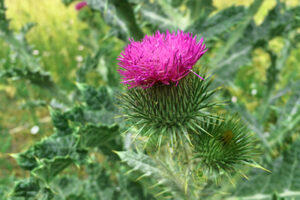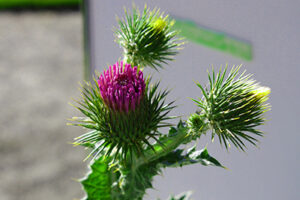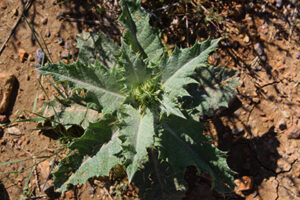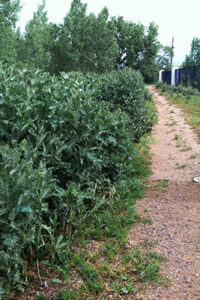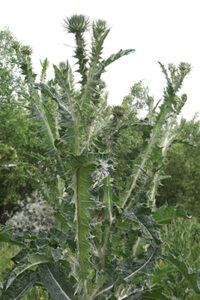Scotch thistle
Onopordum acanthium
Scotch thistle is a biennial member of the Sunflower Family (Asteraceae). The urn-shaped purple flowers have spiny bracts below. Groups of two or three flowers grow at the end of winged, branched stems. Plants can be over 10 feet tall. Young leaves grow from the root crown in a circular “rosette” pattern and can be 3 or more feet long. The stems and leaves are covered with hairs that makes the plant look greyish-green.
Scotch thistle has increased along the Front Range in the last few years and has been found at elevations up to around 8000 feet.
Originally from Europe and Asia, Scotch thistle invades range and pasture lands. It can also be found in disturbed lots, along roadsides, creeks and irrigation ditches.
Scotch thistle reproduces by seed and each plant can produce about 14,000 seeds that can survive in the soil for up to 30 years.
Plants can be controlled by removal, including the top few inches of the taproot. If plants have flowers on them, the flowers need to be removed, bagged, and disposed of at a landfill.
Chemical control when applied to young plants before they form buds is effective. A surfactant should be used to help the herbicide penetrate the hairy leaves.
Another species, Onopordum tauricum is found in very limited areas of Colorado. The leaves and stems are smoother and have glandular hairs. The plant is bright green. The flowers appear more rounded than O. acanthium.
Resources
